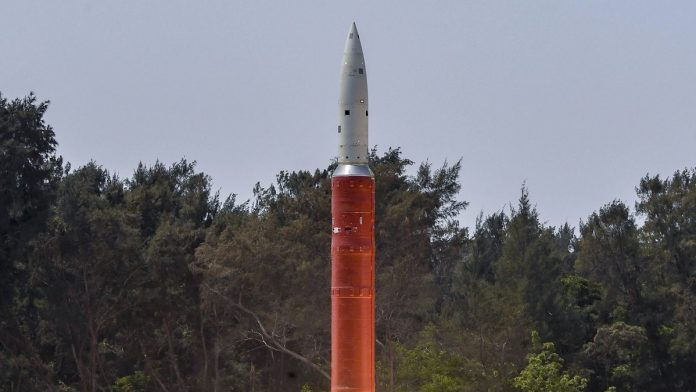In a massive boost to India’s defence capabilities, the first phase of the ballistic missile defense system has been completed. After exemplary demonstration of the A-sat missile system, ballistic missile defence capabilities will bring India into a select group of nations which have developed such sophisticated defence capabilities.
DRDO is awaiting a formal ‘go ahead’ for the deployment of active missiles. Delhi and Mumbai will be the first cities to be covered under this program. “The phase one of the Ballistic Missile Defence programme has been completed. We have deployed two indigenous long-range radars as part of the programme. As and when we get an all-clear from the government, the specific missiles will be deployed,” a top source in the defence establishment told The Print.
The officials have also indicated that the deployment of the defense system can be expected “soon”. India’s ballistic missile defense system is a two tier system consisting of land and sea based interceptor missiles namely the Prithvi Air Defence (PAD) missile for high altitude interception, and the Advanced Air Defence (AAD) Missile for lower altitude interception. The Prithvi Air Defence (PAD) missile are developed to intercept incoming ballistic missile in exo-atmospheric conditions with a maximum altitude of 80 Km, on the other and the Advanced Air Defence (AAD) Missile are developed to intercept missiles in endo-atmospheric conditions with a maximum altitude of 30 km. In 2017, India had tested a new exo-atmospheric interceptor missile named the Prithvi Defence Vehicle (PDV), which reportedly intercepted a missile at an altitude of 100 km during trials. The first missile test for a BMD system was conducted in November 2006, when a Prithvi-II missile was successfully intercepted by the PAD in the endo-atmospheric level at an altitude of about 48 km.
Chairman of Defence Research and Development Organisation, DRDO, G Satheesh Reddy, speaking on India’s indigenous defense capabilities had said India is one of the few countries who are perusing Ballistic Missiles Development (BMD). Ballistic Missile Defense program was introduced in the wake of threat from Pakistan, which has been notorious for using its nuclear capabilities to blackmail India. Development of the anti-ballistic missile system began in 1999.
In 1987, during large scale mobilization of Indian security forces under then General K Sundarji for war game ‘Operation Brasstacks’ in the Rajasthan deserts, saw then Pakistani president Zia-ul-Haq mobilizing Pakistani army and Air force in response to India, it was only in January 1987 in an interview given by Pakistani nuclear scientist Abdul Qadeer Khan, to journalist Kuldip Nayar had said “Nobody can undo Pakistan… We are here to stay. Be clear that we shall use the bomb if our existence is threatened.” The war exercise took place between November 1986 and March 1987.
India has also been successful in developing indigenous Radar capabilities to be deployed complementary to ballistic missile defence systems. The international community has also supported India’s Development of defence capabilities as deterrence against aggression from rogue states like Pakistan. USA on recent ASAT tests had also supported India.
The United States Strategic Command’s Commander General John E Hyten had told members of the powerful Senate Armed Services Committee on Thursday while responding to a question from Senators on the need for India to do anti-satellite missile test. “The first lesson from the Indian ASAT is just the simple question of why did they do that. And the answer should be, I think to all the committee looking at it, is that they did that because they are concerned about threats to their nation from space, and therefore they feel they have to have a capability to defend themselves in space.”
On Ballistic missile defense, India’s prospects look bright. Ballistic missile defense is poised to aid India in countering persistent threats from rogue nations in South Asia. India’s efforts over the past few years have been highly proactive. ‘Make in India’ is also poised to further aid indigenization efforts.
